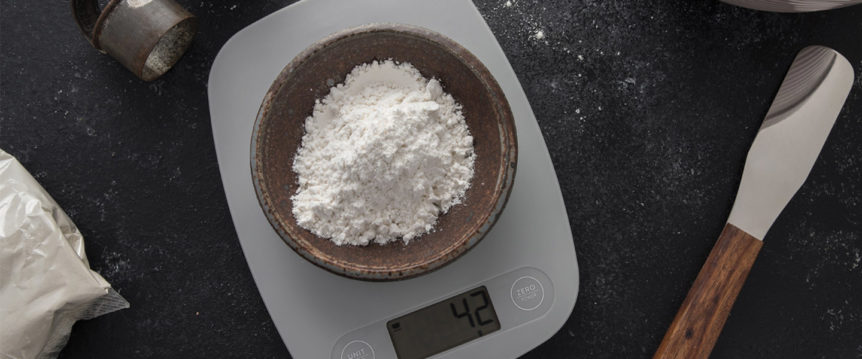“Baking is a science as well as an art,” says Jeffrey Larsen, author of Gluten-Free Baking at Home (Ten Speed, 2019). “So for the best results, you should weigh your ingredients with a food scale.” Larsen explains that when you’re using cup measurements, little pockets of unseen air can form, affecting the true amount. With a food scale, ingredient weights can be exact.
That said, Larsen measures smaller increments of ingredients—teaspoons and tablespoons—with measuring spoons. Why? “Scales are not calibrated to measure under 10 grams consistently,” he explains.
How to weigh flours and sugar
1. Place the mixing bowl on the scale, and zero out the weight of the bowl by pressing the “tare” button.
2. Add your first dry ingredient per the weight in the recipe. Be careful to keep the ingredient in a concise lump in one part of the bowl.
3. Press the tare button again to zero out the scale, and add your second dry ingredient into another part of the bowl. (Keeping dry ingredients separate inside the bowl allows you to remove some if
you accidentally add too much.)
4. The photo above shows what the final bowl of weighed ingredients will look like.
To accurately measure liquids, use a glass or Pyrex measuring cup with a handle.

